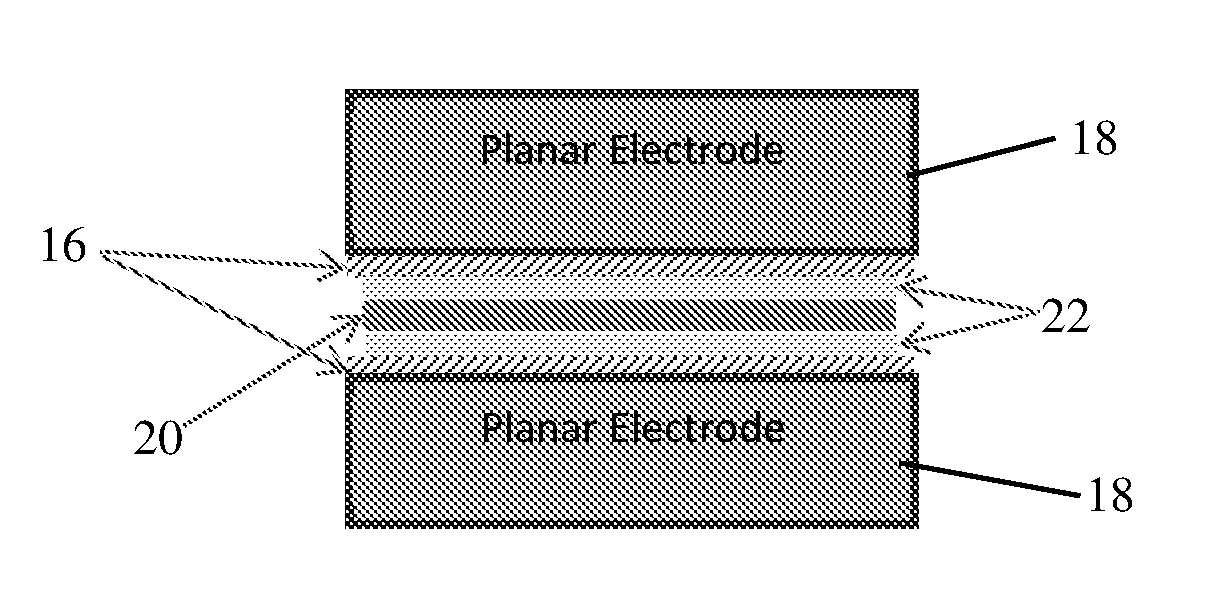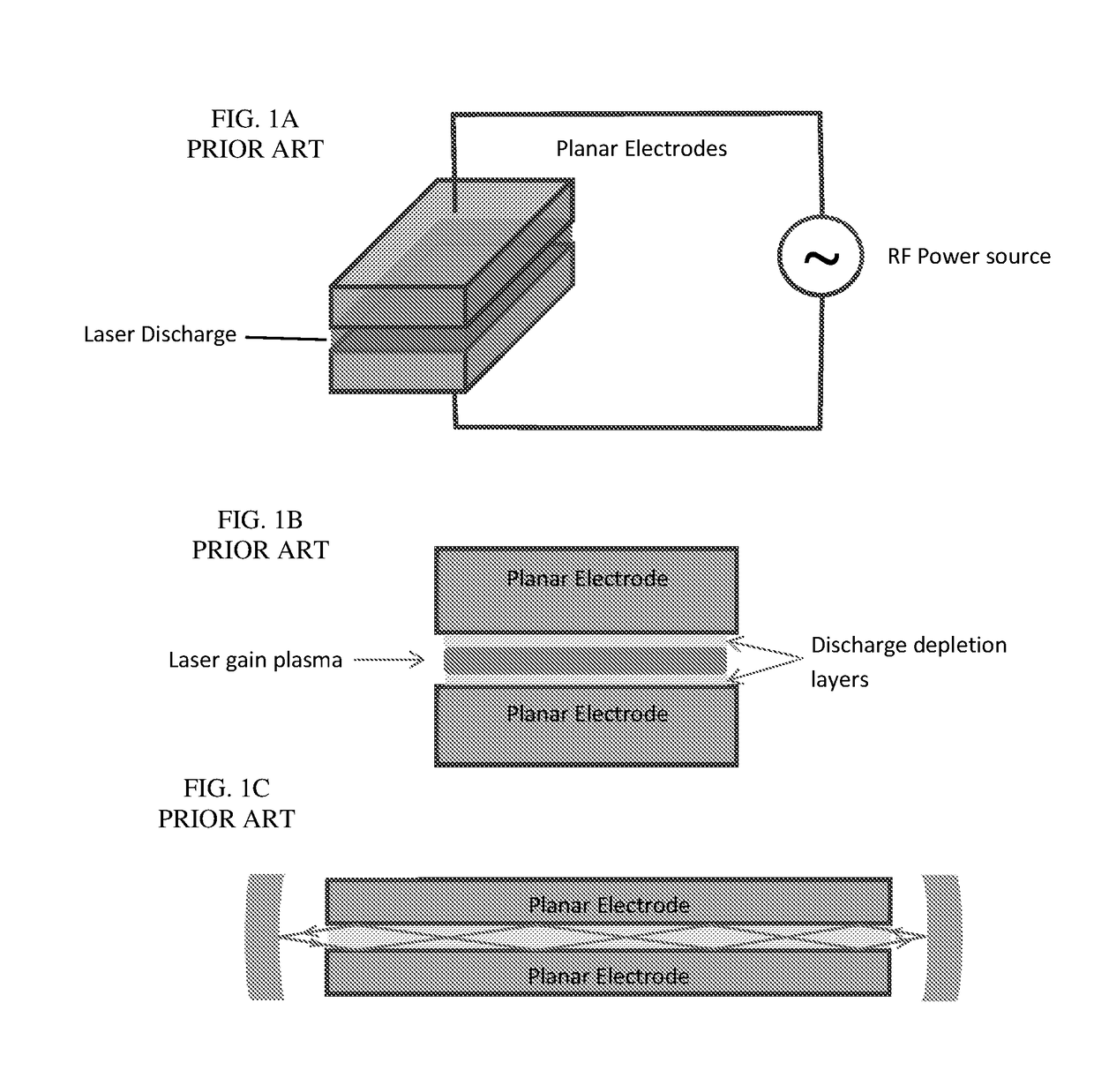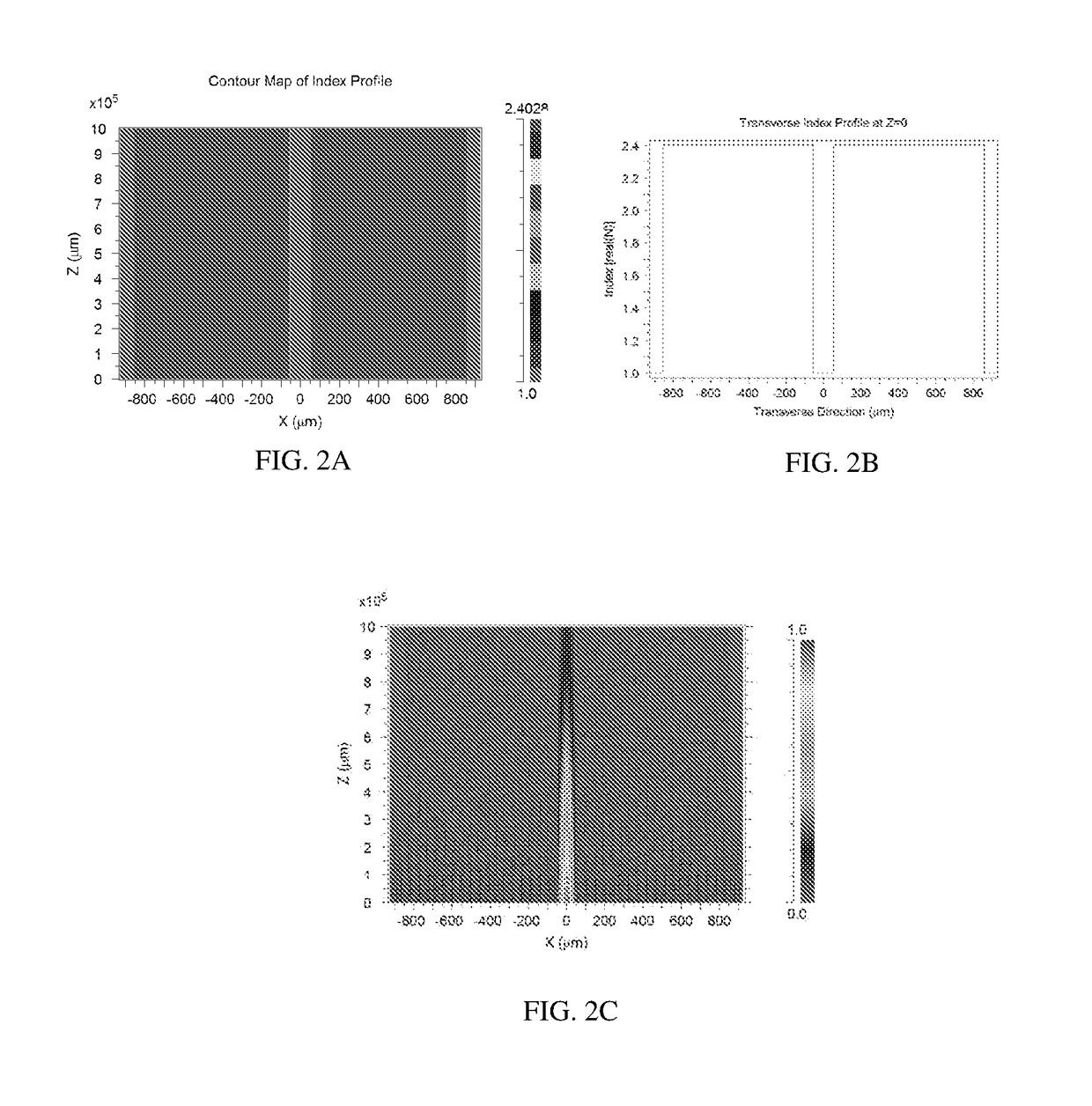Gas slab laser
a laser and gas slab technology, applied in gas laser construction details, laser details, electrical equipment, etc., can solve the problems of limited laser output power, extensive loss, laser deterioration, etc., and achieve the effect of reducing the electrode gap and high power load
- Summary
- Abstract
- Description
- Claims
- Application Information
AI Technical Summary
Benefits of technology
Problems solved by technology
Method used
Image
Examples
Embodiment Construction
[0022]Reference is now made to FIGS. 3A-3B, which illustrate a bandgap structured waveguide 10 for a gas slab laser, constructed and operative in accordance with an embodiment of the invention, made of an aluminum oxide / germanium (Al2O3 / Ge) planar structure.
[0023]The waveguide 10 includes dielectric electrodes 12 that have a photonic band-gap structure, which prohibits (at the selected wavelength, relevant for the laser operation) light propagation in the dielectric electrodes material. In a particular embodiment, dielectric electrodes 12 include spatially alternating layers of two different materials—Al2O3 and Ge (aluminum oxide and germanium)—have been utilized (with refracting indices of 0.67-i0.04 and 4, respectively) (FIG. 3A) for λ=10.6 μm wave propagation. A layer width of λ / (4−n) was chosen for each material type, where n stands for the refractive index of the relevant material. The bandgap structure confines a gap 14, such as a one dimensional 250 μm gap, in which the CO2 l...
PUM
 Login to View More
Login to View More Abstract
Description
Claims
Application Information
 Login to View More
Login to View More - R&D
- Intellectual Property
- Life Sciences
- Materials
- Tech Scout
- Unparalleled Data Quality
- Higher Quality Content
- 60% Fewer Hallucinations
Browse by: Latest US Patents, China's latest patents, Technical Efficacy Thesaurus, Application Domain, Technology Topic, Popular Technical Reports.
© 2025 PatSnap. All rights reserved.Legal|Privacy policy|Modern Slavery Act Transparency Statement|Sitemap|About US| Contact US: help@patsnap.com



